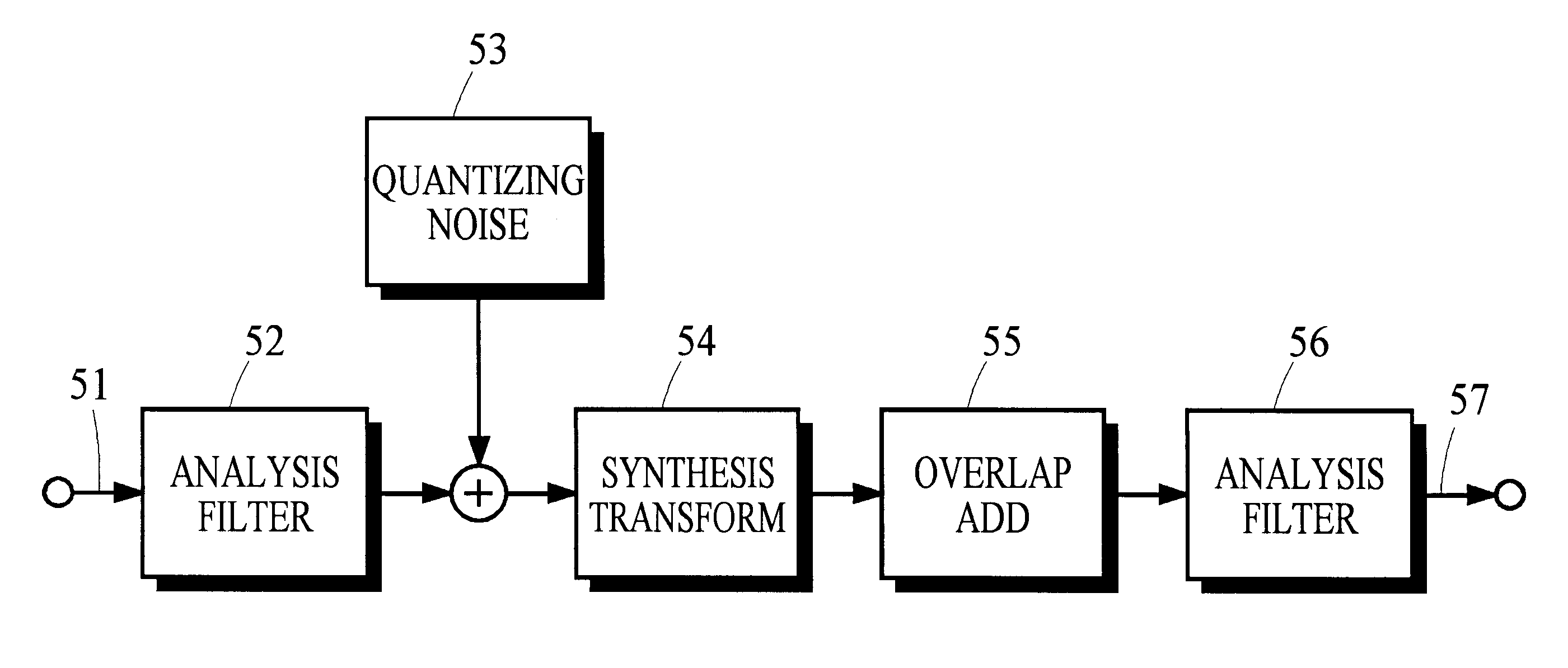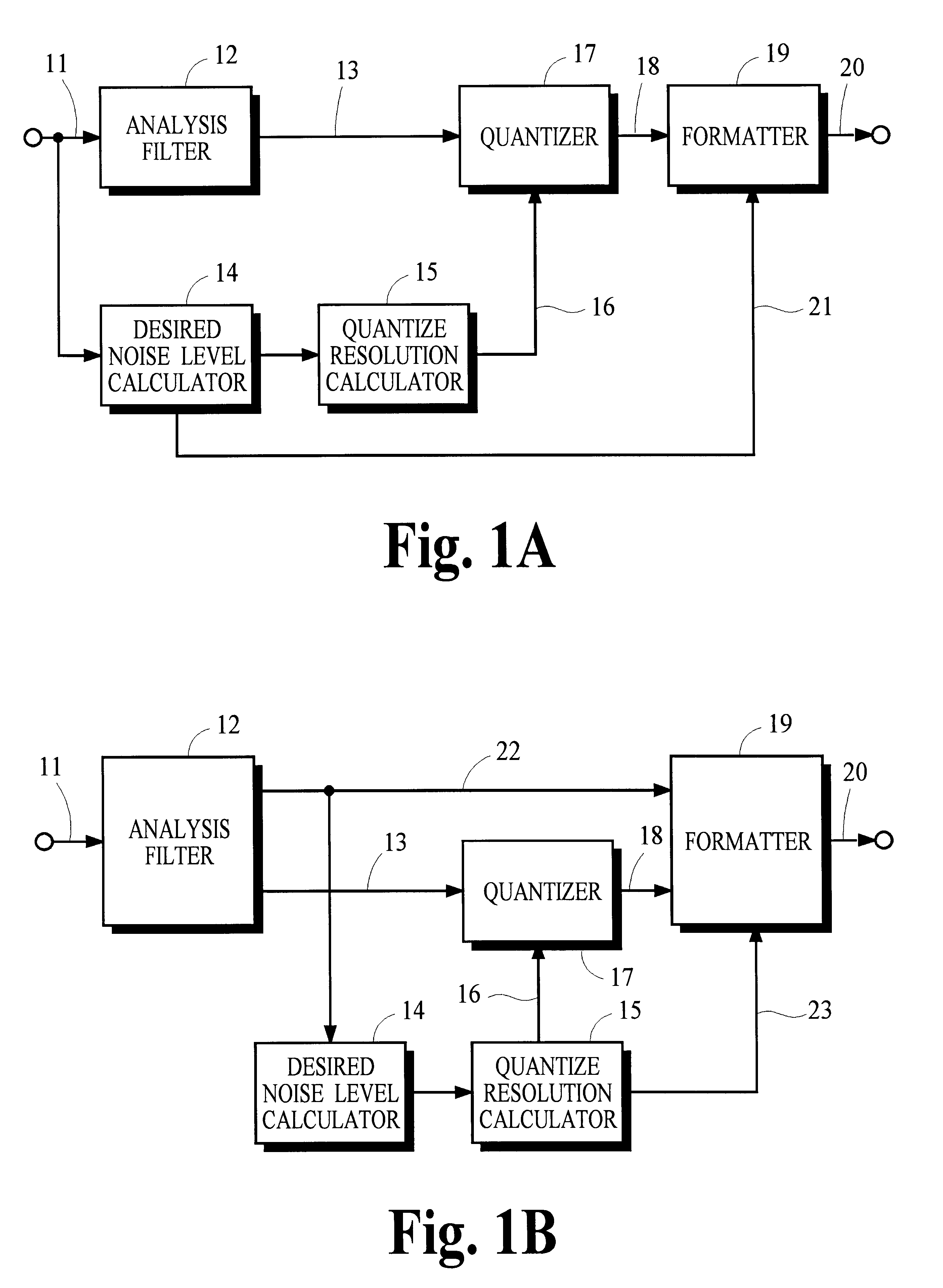Quantization in perceptual audio coders with compensation for synthesis filter noise spreading and the overlap-add process
a perceptual audio coder and synthesis filter technology, applied in the field of quantization in perceptual audio coders with compensation for synthesis filter noise spreading and the overlapadd process, can solve the problems of further distorting the spectral measure of input signal, false assumption, audible noise in the output signal obtained from the synthesis filter, etc., to achieve accurate compensation for noise spreading in the synthesis filter, improve the performance of perceptual coding system
- Summary
- Abstract
- Description
- Claims
- Application Information
AI Technical Summary
Benefits of technology
Problems solved by technology
Method used
Image
Examples
Embodiment Construction
A. Overview
1. Encoder
FIG. 1A illustrates one embodiment of a split-band encoder incorporating various aspects of the present invention in which a bank of analysis filters 12 is applied to a digital audio signal received from path 11 to generate frequency-subband signals along path 13. The bank of analysis filters may be implemented in a wide variety of ways. In preferred embodiments, the bank of filters is implemented by weighting or modulating overlapped blocks of digital audio samples with an analysis window function and applying a particular Modified Discrete Cosine Transform (DCT) to the window-weighted blocks. This MDCT is referred to as a Time-Domain Aliasing Cancellation (TDAC) transform and is disclosed in Princen, Johnson and Bradley, "Subband / Transform Coding Using Filter Bank Designs Based on Time Domain Aliasing Cancellation," Proc. Int. Conf. Acoust., Speech, and Signal Proc., May 1987, pp. 2161-2164.
In the embodiment shown, desired noise level calculator 14 analyzes th...
PUM
 Login to View More
Login to View More Abstract
Description
Claims
Application Information
 Login to View More
Login to View More - R&D
- Intellectual Property
- Life Sciences
- Materials
- Tech Scout
- Unparalleled Data Quality
- Higher Quality Content
- 60% Fewer Hallucinations
Browse by: Latest US Patents, China's latest patents, Technical Efficacy Thesaurus, Application Domain, Technology Topic, Popular Technical Reports.
© 2025 PatSnap. All rights reserved.Legal|Privacy policy|Modern Slavery Act Transparency Statement|Sitemap|About US| Contact US: help@patsnap.com



